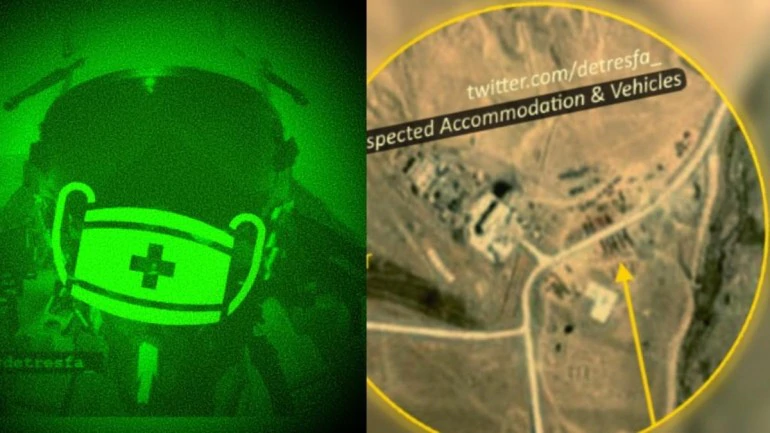
SOURCE: INDIA TODAY
China never expected the Indian Army to turn their own playbook against them — India’s reciprocal infrastructure measures caught them by surprise – these are the words of an individual identified only as ‘Detesfra’, a name now wildly popular and highly sought after on Twitter amidst the India-China army standoff in Ladakh.
With an ironic mix of Chinese propaganda and very little specific official word from the Indian government, the information void has been gamely filled by a handful of open-source intelligence (OSINT) analysts, who have leveraged their access to the latest commercial satellite imagery and digital skills to provide detailed visual canvases of the high altitude battlefield. But none have provided more mesmerisingly detailed, easy-to-grasp imagery than DetResFa.
When he heard about the standoff through media reports in early May, he quickly trained his focus on the story. After doing deep OSINT work on the Doklam standoff in 2017 and the Balakot airstrikes last year, DetResFa knew he couldn’t pass this up. “The Chinese military has always presented a fait accompli, infrastructure-wise to India. They go in and do things and create ‘facts on the ground’, the way Israelis do in the West Bank. They have been building up capacity along the Line of Actual Control as well,” DetResFa says in his first-ever interview to media.
While his imagery has been used in mainstream media before, this is the first time he has taken questions.
“In respect to what we have been seeing at Ladakh’s Galwan Valley, Pangong Lake and Hot Springs, it’s a clear Chinese build-up of multiple things. You have living areas along with equipment and roadworks visible, all currently within China’s claim area. India too isn’t backing off. Interestingly, when you put images of days in sequence together and cycle through, you end up seeing how both sides matched forces almost mirroring each other,” says DetResFa.
He wonders why India didn’t expect the Chinese mobilisation.
“Combined with the political developments last year, specifically the revocation of Article 370, a reaction was expected,” he says.
While China’s aggressive mobilisation has become a running theme through the story, DetResFa says the imagery bears this out in startling detail, indicating a highly pre-planned operation.
“What stood out for me was the very well thought-through and planned road and logistics network developed by China. Their focus on rapid mobilisation and the ability to concentrate large forces in a short span of time across their areas of interest is commendable. Their ability to saturate has the potential to build considerable political pressure on the adversary,” DetResFa says.Asked about highly contradictory reports in Indian media about the seriousness of the standoff, DetResFa prefers not to comment directly, but says, “On the basis of my data points, I am observing notable markers indicating a multi-platform build up on both sides. Official media inputs from military sources have also confirmed this hypothesis. Media and social media in India and China at this point of time are full of misinformation. Either out of a directed campaign, or ignorance, I am not sure. My personal opinion boils down to yes — something has happened. Both sides are testing grey areas and displaying a recurring pattern of belligerence. However, given domestic realities on both sides, expect these grey areas to continue lingering.”
Finally, on the issue of Chinese or Pakistani ‘bots’ that have flooded social media to plant disinformation and false ‘OSINT’ data, DetResFa has an interesting take. Asked if such organised disinformation hampers the work of serious OSINT analysts like himself, he says, “Not at all. In fact, to someone who is comfortable with the idea of open-source data generating intelligence, misinformation is also an important indicator of agendas and interests. I recommend staying objective but internalising these signals, and incorporating them into pattern analysis. Falsified data spread deliberately or accidental misinterpretations gone viral actually help OSINT enthusiasts, providing baselines to validate and formulate other inferences, rectify errors or perspectives, or even simply become part of the data-bank for future use.”
https://defencenewsofindia.com/indias-reciprocal-measures-caught-china-by-surprise-satellite-imagery-expert/






